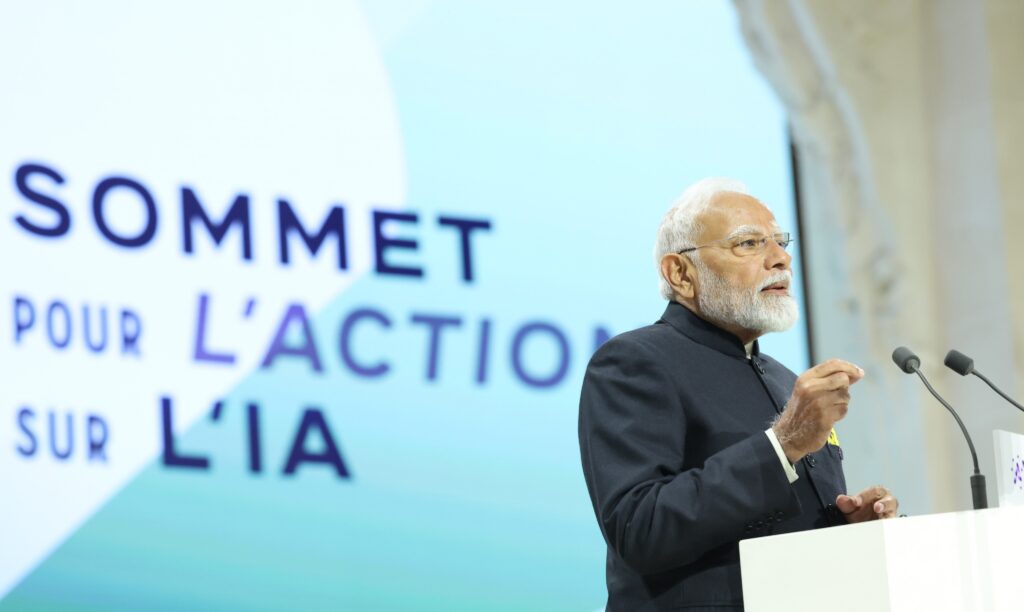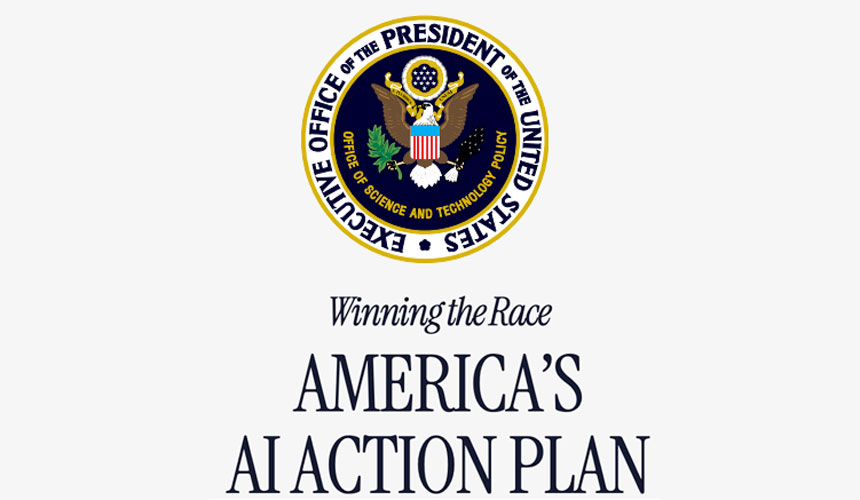The Trump administration’s release of the U.S. AI Action Plan on July 23, 2025, is more than a domestic policy blueprint. It is a bold declaration of America’s intent to shape the global future of artificial intelligence.
With priorities spanning secure AI exports, open-source ecosystems, talent development and frontier hardware, the plan carries far-reaching implications for partners like India. As a Quad member and Indo-Pacific ally, India now stands at a pivotal moment. The question is whether it will merely align with the agenda or co-author the AI future.
India’s National AI Mission, also known as IndiaAI, is already underway. But success depends on addressing the four core pillars of AI: Connectivity, Context (data), Compute, and Competence (skills). India has the first two—abundant data and skilled talent but lacks robust computing power and hardware infrastructure. This is where the U.S. AI Action Plan offers a timely opportunity.
1. Strategic Tech Transfers: AI as a Geopolitical Lever
The U.S. plan to export “secure, full-stack AI packages” to trusted partners offers India an opportunity to access critical technologies such as semiconductors, data systems and AI model development. These elements are essential to advance India’s AI ambitions.

Joint development of hardware and models with U.S. partners can boost India’s supply chain resilience and technological readiness. By co-developing tools suited to the needs of the Global South and attracting U.S. investment in compute infrastructure, India can help shape inclusive AI markets across emerging economies.
2. Skill Mobility: Building Bridges and Retaining Talent
The rapid expansion of AI infrastructure in the U.S., from regional data hubs to frontier labs, is creating unprecedented demand for skilled professionals. Initiatives like TRUST (Transforming the Relationship Utilizing Strategic Technologies) can streamline mobility pathways for Indian talent. Workforce development partnerships could target emerging fields like AI ethics, edge computing, or quantum-AI integration
At the same time, India must invest in its R&D ecosystem, strengthen research infrastructure and offer clear career tracks in deep-tech sectors. Already the second-largest contributor to AI projects on GitHub, India is on course to surpass the U.S. developer base by 2028. But turning this coding power into innovation at home remains a challenge. Retaining top talent will be essential to India’s transition from a global IT back office to a strategic Global Capability Center (GCC) hub for U.S. firms, a win-win for both countries.
3. Open-Source Alignment: A Shared Ideological Bridge
The U.S. is positioning open-source AI as a tool for transparency, democratic resilience and global soft power. India has already demonstrated thought leadership in this area through scalable digital public goods like UPI, ONDC, and DigiLocker. The launch of the IndiaAI Datasets Platform (AIKosha) earlier this year marks an important step in organizing India’s data assets.

This creates fertile ground for India and the U.S. to co-develop open-source AI tools suited for multilingual and low-resource settings. Joint leadership here can offer the Global South a democratic, inclusive alternative to the closed models emerging from other authoritarian regimes.
4. Bridging the Compute Gap: Investment and Infrastructure
India’s compute capacity remains limited due to a nascent chip manufacturing industry and evolving data infrastructure. While the national GPU capacity has surpassed 34,000 this year and the Ministry of Electronics and Information Technology (MeitY) has backed three startups to build domestic foundation models, the gap with China remains wide. China’s progress with models like DeepSeek underscores the urgency.
India is positioning itself as a global data center hub, supported by 100 percent FDI and investments from U.S. tech giants such as AWS and Microsoft. To close the compute gap, India must deepen its partnership with the U.S. to expand infrastructure, establish trusted data-sharing frameworks, and create incentives for AI-specific hardware innovation.
5. Regulatory Readiness: Walking the Middle Path
India has an opportunity to craft an AI regulatory framework that encourages innovation while upholding accountability. Unlike the European Union’s risk-heavy AI Act, India can pursue a balanced approach that fosters experimentation alongside responsible oversight.
However, progress has been slow. The Digital Personal Data Protection Act of 2023 remains partially implemented, and promised regulatory reforms such as the long-pending Data Centre Policy and the granting of infrastructure status for digital services have yet to materialize. To attract global AI investment, India must establish a regulatory environment that is timely, predictable and innovation friendly.
6. From Space and Defense to AI: The Next Strategic Frontier
The recent successful launch of the NASA-ISRO radar satellite (Nisar) and the spaceflight of Indian astronaut Shubhanshu Shukla to the International Space Station under AX-4 show what U.S.–India collaboration can achieve. The INDUS-X initiative has already deepened bilateral ties in defense and strategic technologies.
In February, President Donald Trump and Prime Minister Narendra Modi expanded bilateral ties through the U.S.-India COMPACT (Catalyzing Opportunities for Military Partnership, Accelerated Commerce & Technology) and launched TRUST (Transforming the Relationship Utilizing Strategic Technology) to guide government, academic, and private sector collaboration on critical and emerging technologies. With the AI Action Plan now in place, artificial intelligence is poised to power the next phase of the India–U.S. partnership.
The Moment to Lead, Not Just Align
The U.S. AI Action Plan offers India a geopolitical window. The foundation is already in place through frameworks for joint infrastructure efforts, open-source collaboration and skilled workforce initiatives. The approval of Starlink to expand Tier 2 & 3 cities broadband connectivity and the $12 billion Research Development and Innovation scheme to boost private sector frontier tech R&D reflect growing momentum. But to emerge as a true AI innovation hub, India must pair smart policy with global partnerships and accelerate domestic reform.
The world is moving. India must move faster.






